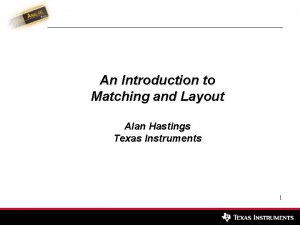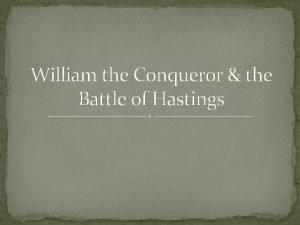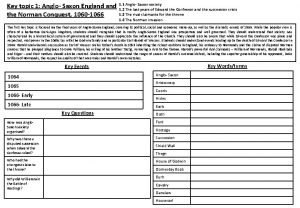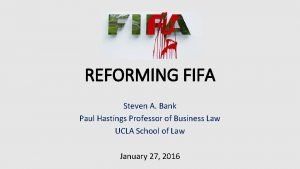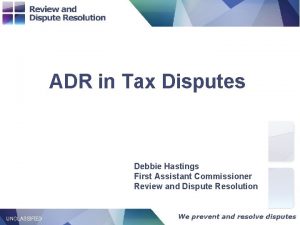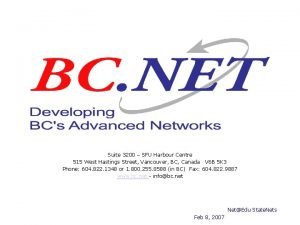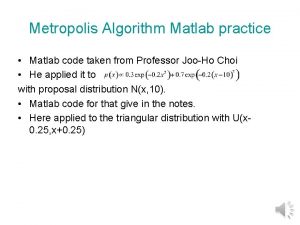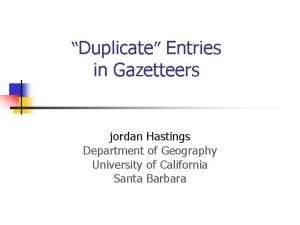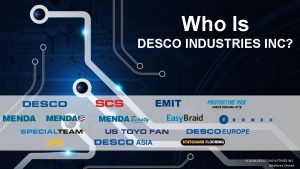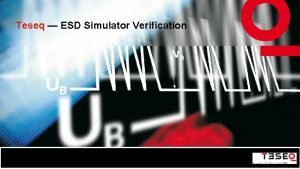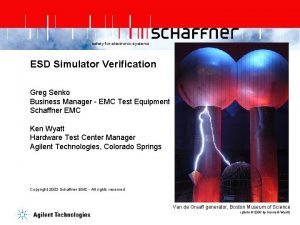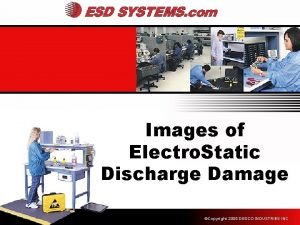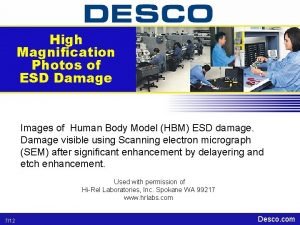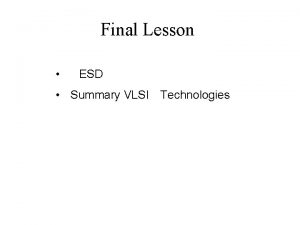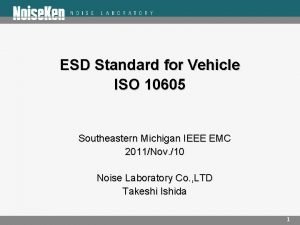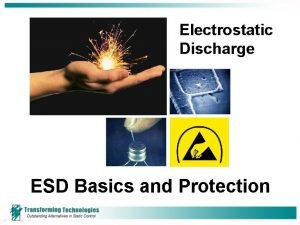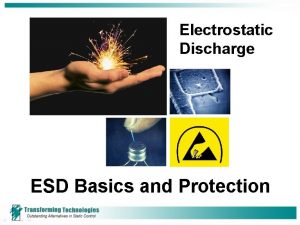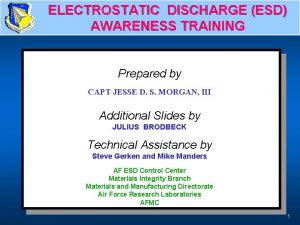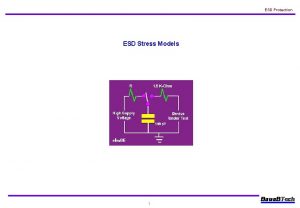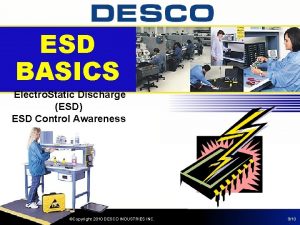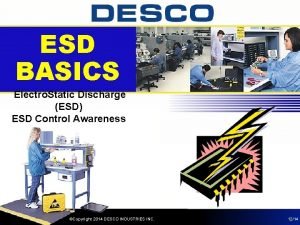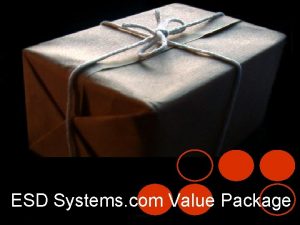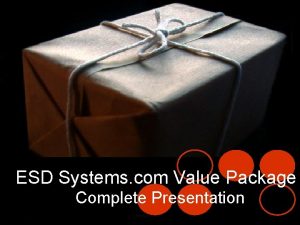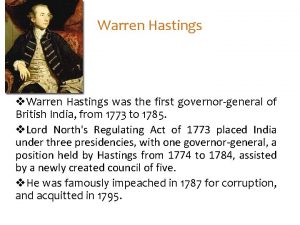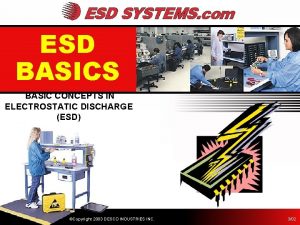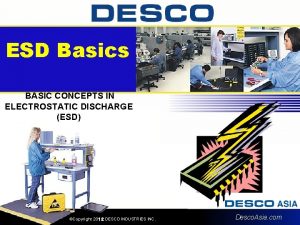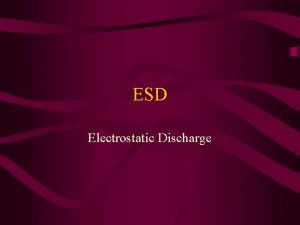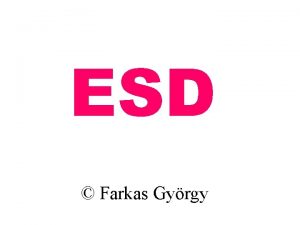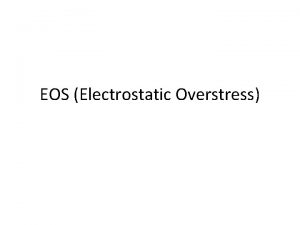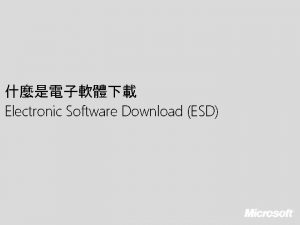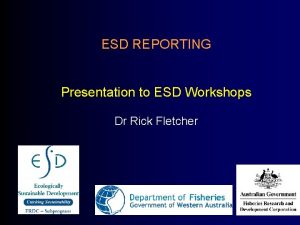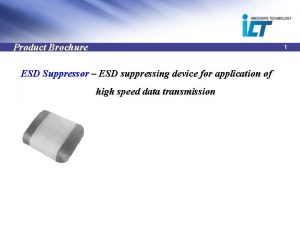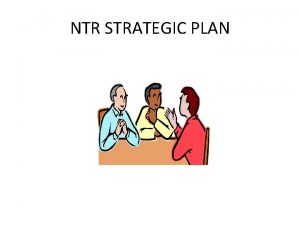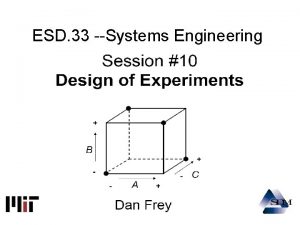ESD Strategic Plan Daniel Hastings Director Engineering Systems





































- Slides: 37

ESD Strategic Plan Daniel Hastings Director, Engineering Systems Division April 2005

Organization • Engineering in 2020 • So. E broad objectives • ESD history • ESD current state • ESD Core Competencies • ESD Mission • ESD Vision 2010 and 2105 • ESD Strategic Thrusts 2

NAE Greatest Engineering Achievements of the 20 th Century 1. 2. 3. 4. 5. 6. 7. 8. 9. 10. Electrification Automobile Airplane Water Supply & Distribution Electronics Radio and Television Agricultural Mechanization Computers Telephone Air Conditioning & Refrigeration 11. Highways 12. Spacecraft 13. Internet 14. Imaging 15. Household Appliances 16. Health Technologies 17. Petroleum & Petrochemical Technologies 18. Laser and Fiber Optics 19. Nuclear Technologies 20. High-performance Materials 3

Observations (by Dean Magnanti) • Engineering has changed the very fabric of society • Innovation occurs through a pipeline – Research – Inventors/entrepreneurs – Companies/government • Multiple disciplines have contributed to most achievements • Most achievements are, or create, complex technical systems 4

Many Opportunities & Challenges (by Dean Magnanti) • Opportunity – Many new technologies and engineering achievements will involve (or create) complex engineering systems – Networking (world, technologies) increases importance of systems • Many challenges – Redesign transportation systems that have increasingly reached capacity and created enormous delays – Reconcile inevitable growth in world-wide energy demand with potential environmental costs – Create product development systems that address the full spectrum of conceiving, designing, and developing new products – … 5

Engineering is Very Different Today • The NAE Vision Report 2004. 2020 Vision Report and other reports call for change with a vigorous statements about engineering work today (1) – – – Globalization of industry and engineering practice Employment shift from large to smaller, entrepreneurial firms Growing share employment in non-traditional, less-technical engineering work (management/ finance/ policy) Knowledge-based “service” economy Diminishing half-life of engineering knowledge in many fields Traditional make/ build is being joined by interdisciplinary work of engineering and IT, biology • Mobility of work, information, and capital (leading to different career paths than in the past? ) • New technologies and content areas – Life science, ultra small, … • Loss of best and brightest to areas like law and finance • New federal government regulations and oversight (e. g. , ITAR). • Environmental responsibility, ethics, societal effects, and economic effects (1) NAE Visions Report 2004 6

Content Evolution: MIT Engineering • Civil Engineering • Mechanical Engineering • Metallurgy • Electrical Engineering • Chemical Engineering • General Engineering • Sanitary Engineering • Naval Architecture and Marine Engineering • Civil and Environment Engineering • Mechanical Engineering • Material Science and Engineering • Electrical Engineering and Computer Science • Chemical Engineering • Ocean Engineering • Nuclear Engineering • Economics and Engineering • Aeronautical and Astronautical Engineering • Business and Engineering Administration • Biological Engineering • Aeronautical Engineering • Engineering Systems 7

Changing Environment and Competitive Landscape • Rapid changes in – Engineering practice • Globalization, entrepreneurship, US service economy, new technologies, broader career options, … – Engineering content • Bio, Nano, Info, Macro (bio everywhere) – Blurring of traditional boundaries – Call for educational reform • Increasing competition from “above and below” – Harvard, Princeton, Stanford financial investments – Other engineering schools creating facilities and hiring as many as 100 new faculty – Flat government and industry funding 8

The premise (from NAE 2020) • Past: Engineering and engineering education were reactive, responding to change. • Today: Rapid change signals that it is time to reverse the paradigm. • Premise: If we anticipate the future and are proactive about changing the engineering and engineering education, we can shape a significant, dynamic role for our profession. 9

New Challenges (from NAE 2020) • Fresh water shortages • Aging infrastructure • Energy demands • Global warming • New diseases • Security • Globalization 10

Concluding question (from NAE 2020) • How do we help the engineering profession create a meaningful place for itself in the broader, multidisciplinary approach required to solve society’s problems? NAE Engineer of 2020 Report: The engineer of 2020 will create solutions at the micro & macro scales in preparation for dramatic changes in the world! ESD will create solutions at the macro scales 11

MIT So. E Vision • The School will be widely recognized as the foremost engineering school in the world. • The School will shape the future of technology education, research, and practice. • The School will remain focused on its core strengths, while seeking new opportunities. 12

MIT So. E Broad Objectives • As the most outstanding school of engineering in the world, set the direction and create new models for engineering education and research • Create new engineering knowledge and technologies • Educate the next generation of leaders of – Engineering educators – Engineering researchers – Engineering practitioners • Impact engineering practice and research 13

Engineering Systems Development at MIT Phase 1 1975 -1985 Startup Dean Alfred Kiel - Modern Engineering, Socio-Economic Systems CTS, CPA, TPP Phase 2 1985 -1990 US Competitiveness in Manufacturing Made in America/Machine That Changed The World LFM - Sloan/SOE/Industry Partnership Phase 3 1990 -1995 Increased Activity New Programs – SDM, MLOG, CIPD Large Scale Systems Committee Technology and Management Program (TMP) LFM/SDM 14

ESD Professional Masters Degree Educational Programs • • • Focus on Practice Rather Than Research Experienced Students Leadership and Team Building Cohort Based Industrial (Governmental) Internships Lifelong Experience 15

ESD Chronology 1976 – 1995 Interdisciplinary Education Programs & Research Centers 1996 Eagar Committee Recommends ESD Formation 1997 New Position Created – Associate Dean for Engineering Systems 1998 December 1998 March 1999 ESD Established First ESD Faculty Appointed 16

Definition of Engineering Systems • Engineering Systems are – Technologically enabled Networks & Meta-systems which transform, transport, exchange and regulate Mass, Energy and Information – Large-scale • large number of interconnections and components – Socio-technical aspects • social, political and economic aspects that influence them – Nested complexity • within technical system and social/political system – Dynamic • involving multiple time scales, uncertainty & lifecycle issues – Likely to have emergent properties • Examples are • Automobile Production Systems, Aerospace enterprise systems, Air and Ground Transportation Systems, Global Communication Systems, the World Wide Web, the National electric power grid These systems exist & have “messy complexity” 17

Engineering Systems (@ the interface of Engineering, Management & Social Sciences) Social Sciences Management ESD Engineering 18

ESD is a cross cutting educational unit 19

ESD Goals & Objectives • ESD will be an intellectual home for faculty from engineering, management, and the social sciences committed to integrative, interdisciplinary Engineering Systems programs. • ESD will develop concepts, frameworks, and methodologies that codify knowledge and define Engineering Systems as a field of study. • ESD will educate engineering students to be tomorrow’s leaders via innovative academic and research programs. • ESD will introduce Engineering Systems into the mainstream of engineering education by working with the MIT engineering departments, the Institute as a whole, and other engineering schools worldwide & developing new curricula. • ESD will initiate research on Engineering Systems of national and international importance, working in partnerships with government and industry. 20

ENGINEERING SYSTEMS is a field of study taking an integrative holistic view of large-scale, complex, technologically-enabled systems with significant enterprise level interactions and socio-technical interfaces. MIT Engineering Systems Division New Education Model CTL- Center for Transportation & Logistics TPP - Technology & Policy Program LGO - Leaders for Manufacturing CTPID - Center for Technology, Policy, & Industrial Development SDM - Systems Design & Management MLOG Logistics & Supply Chains IPC - Industrial Performance Center ESD SM Program CIPD - Center for Innovation in Product Development ESD Doctoral Program Economics, Statistics TPP Systems Theory Operations Research /Systems Analysis SDM ESD MLOG System Architecture & Eng /Product Development ENGINEERING SYSTEMS LGO Engineering Management Organizational Theory Technology & Policy 21 Political Economy

Areas of Research • In ESD Centers – Industry (Aerospace, Auto, Communications, Materials) – Supply Chain/Logistics – Public Transport/Mobility – Product Development/System Design/Architecture – Manufacturing • In Related Centers – Energy and Environment – Operations Research • Startups – Security – Infrastructure • In Consideration – Health Care 22

Evolution of ESD Research • Big M Manufacturing • Product Development, System Design • Enterprise Perspective • Extended Enterprise (Value Chains) • Enterprise Eco System Broadening of Research Logistics Supply Chain National Global Physical Information (Knowledge) Products Services 23

ESD VC feedback • ESD has successfully reached the first plateau (this is the end of the beginning) – ESD created with legacy educational programs and research centers – ESD has successfully stabilized the programs and provided faculty support for the centers – ESD now has a set of flagship professional masters programs – However, ESD was created to be transformative – However, ESD & MIT should think about how to grow to the next plateau – ESD has the opportunity to set educational agenda nationally 24

Unique core competencies (current and desired; which give sustainable competitive advantage) • Industry/academia & Industry/Government/academia partnerships to address large scale engineering systems as well as engineering enterprises • Innovating across Engineering/Management/Social Science boundaries to analyze complex engineering systems and engineering enterprises • Model Development for large scale complex systems including coupled technical/organizational/policy analysis in a strong quantitative and qualitative framework (needs to be developed) 25

New ESD Mission Statement • ESD is establishing Engineering Systems as a field of study in order to transform macro scale engineering systems in society. It will do so by educating engineering leaders in, and developing principles and methods for, engineering systems that cut across the boundaries of engineering, management and social science. ESD Cooperation Principles (recognizing that systems belongs to many) Act as a node in a network of systems activities at MIT with porous boundaries NAE Engineer of 2020 Report: The engineer of 2020 will create solutions at the micro & macro scales in preparation for dramatic changes in the world! ESD will create societally acceptable solutions at the macro scales 26

ESD: Vision 2015 (from 2005) • Deep development of intellectual foundations – – – • Engineering Education in the US redefined – – • Transformative impact on education through development of innovative curricula Engineering education redefined to include systems thinking Global Engineering Systems Community created – – • New problems and areas formulated Several proof of concepts Transform the funding agencies to support these ideas Many major universities have created cross cutting units MIT is a magnet for the best faculty in this area Ph. Ds from MIT in this area are highly sought after Environment for faculty growth and leadership Major impact on society, education and thought – – Industry and Government customers recognize this Graduates of the ESD programs are leading society’s most challenging and complex ‘system of systems’ endeavors • MIT ESD education has given them knowledge, skills, and abilities to make system level decisions that have had significant positive impact to society on a global basis 27

ESD Strategic Thrusts: Action Oriented • Consistent with mission • Build on core competencies • Use strengths, buttress weaknesses • Seize opportunities, fight off threats 28

ESD Strategic Thrusts • Foundations • Applications • Education 29

Strategies for Advancing Engineering Systems as a Field Impacting Policy and Practice Advancing Core Theory Innovative Modeling and Analysis Systematic Observation and Documentation 30

ESD Strategic Thrusts: Foundations • Develop Fundamental Principles and Foundations Of Engineering Systems Which Establish Engineering Systems as a New Field Of Study – Engineering Systems Principles Will Differ From Engineering Science Principles • Enterprise Level Perspective • Holistic Vs. Reductionist Approach • Macro Scale Vs. Micro Scale Design • Qualitative As Well As Quantitative Approaches, Context Part of Engineering System Analysis 1. Form a Research Center on Engineering Systems Foundations 2. Recruit several faculty to build up foundations in engineering enterprises & lifecycle properties 3. Assume Leadership In Cooperative University Efforts Through University Council • • 4. Engineering Systems For example, organize periodic Conference on Foundations of Engineering Systems Take leadership in professional societies such as INCOSE, INFORMS to advance engineering system fundamentals Develop a Book Series or interdisciplinary journals & courses in five years on Fundamentals of Engineering Systems Utilizing Research Findings 31

ESD Strategic Thrusts: Applications • Application Foci which interact with foundations in a “ping pong” fashion and engage society around critical contemporary issues – Major Focus (5 years): Distributed critical infrastructures, broadly defined (strong emphasis on critical contemporary problems such as energy, homeland security, transportation, mega-cities, …) • • • – Secondary foci (10 years): Health care systems • • • Use cross cutting analyses to bring out energy, security, safety, sustainability concerns Develop a system of systems focus Collect and develop comprehensive data sets Develop a Leaders for Health Care program based on lean principles, systems thinking Help define 21 st century Engineering Sloan Interaction Secondary foci (10 years) : Emerging Technologies • • Develop a broad activity with the ability to provide technically deep focused policy analysis around emerging technologies Help define a 21 st century Engineering Humanities relationship 32

ESD Strategic Thrusts: Education • SM and Ph. D: – Develop and build a new core for the ESD Ph. D. For example, six new ESD unique courses as the core of the ESD Phd (and SM) built around the intellectual framework of enterprises • Examples – – • – – Export all courses to the Engineering Systems Council member institutions as well as OCW Capture common leadership elements of LGO, SDM, MLOG & TPP and evolve into ESD leadership curriculum Over time, evolve flagship programs (LGO, SDM, MLOG & TPP) around set of core courses and to address new issues for ES • • Risk and enterprise systems design System Architecture & policy interaction & design Theoretical approaches to sustainability in enterprises OR & system analytic approaches to complex systems E. g LGO China as means for addressing globalization UG: -- – Work toward integrating systems thinking in the General Institute Requirements (GIRs) through the Engineering Council for Undergraduate Education (ECUE) Develop materials that illustrate complex systems thinking focused on contemporary critical issues (CCIs) • – E. g Energy, transportation, telecommunications Offer subjects and modules at MIT and export to other schools through OCW 33

ESD Intersections & Positioning • ESD in So. E – – – • ESD and Sloan – – • • • Will continue the partnership in SDM and LGO Will seek to grow the MLOG interaction Will seek to grow a partnership around economics issues in the CCIT Will seek to grow a partnership around health care (technology, systems, management perspectives) ESD and SHASS – – – • Will seek partners for the CCIT with CEE, AA, EECS, ME Will seek partnership with ME, Chem. E, NE in energy (as well as LFEE) Will develop the partnership with MSE, ME in sustainability Will continue the partnership in the NSF IGERT (STS and Poli Sci) Will seek to expand the relationship through TPP Will seek to expand the partnership around the public policy issues in CCIT and Po. ET ESD and ORC – Will seek partnerships by involving OR faculty in big ESD projects ESD and LFEE – Will seek partnerships in large scale energy related projects at the systems level ranging from architecture to policy ESD and DUSP – Seek partnerships around engineering systems issues of megacities 34

Mapping of Strategic Thrusts to Vision 2010 Thrust Foundations Applications Education Vision Establish ES field of study X X X Create external intellectual community X X X Earned presence @MIT X X X Developing impact on gov, industry 35

NAE 2020: Attributes of the engineer of 2020 • Strong analytical skills • Practical ingenuity, creativity • Good communication skills • Business, management skills; leadership skills • High ethical standards, professionalism • Dynamic/agile/resilient/flexible • Lifelong learner • Able to put problems in their socio-technical and operational context 36

ESD Strategy for 2010 • ESD students in 2010 will be engineering leaders in 2020 • ESD Core SM and flagship professional degrees capture the critical elements of the 2020 needs • ESD Ph. Ds will be change agents in engineering schools worldwide 37
 Principles of complex systems for systems engineering
Principles of complex systems for systems engineering Engineering elegant systems: theory of systems engineering
Engineering elegant systems: theory of systems engineering Daniel hastings mit
Daniel hastings mit Explain why william won the battle of hastings
Explain why william won the battle of hastings Fyrd battle of hastings
Fyrd battle of hastings Kim byli normanowie
Kim byli normanowie Oracle business partners
Oracle business partners Why did william win the battle of hastings?
Why did william win the battle of hastings? Interdigitation matching
Interdigitation matching Battle of hastings
Battle of hastings Slag bij hastings
Slag bij hastings Klassenfahrt england gastfamilien
Klassenfahrt england gastfamilien Harolds mistakes in the battle of hastings
Harolds mistakes in the battle of hastings Fifa organizational chart
Fifa organizational chart Dr hastings joi
Dr hastings joi Harolds mistakes in the battle of hastings
Harolds mistakes in the battle of hastings Mary kay ash edward alexander wagner
Mary kay ash edward alexander wagner Debbie hastings
Debbie hastings Janna hastings
Janna hastings Amir.netedu
Amir.netedu Sutronwin
Sutronwin Metropolis algorithm matlab
Metropolis algorithm matlab Dr helen kay
Dr helen kay Jordan hastings
Jordan hastings Strategic fit vs strategic intent
Strategic fit vs strategic intent Strategic substitutes and complements
Strategic substitutes and complements Resource based model
Resource based model Strategy analysis and choice largely involves making
Strategy analysis and choice largely involves making Desco industries inc.
Desco industries inc. Teseq esd guns
Teseq esd guns Minizap esd simulator
Minizap esd simulator Esd damage images
Esd damage images Esd pictures
Esd pictures Esd in vlsi
Esd in vlsi Iso10605 testing
Iso10605 testing Esd example
Esd example Esd protection basics
Esd protection basics Esd marking
Esd marking








